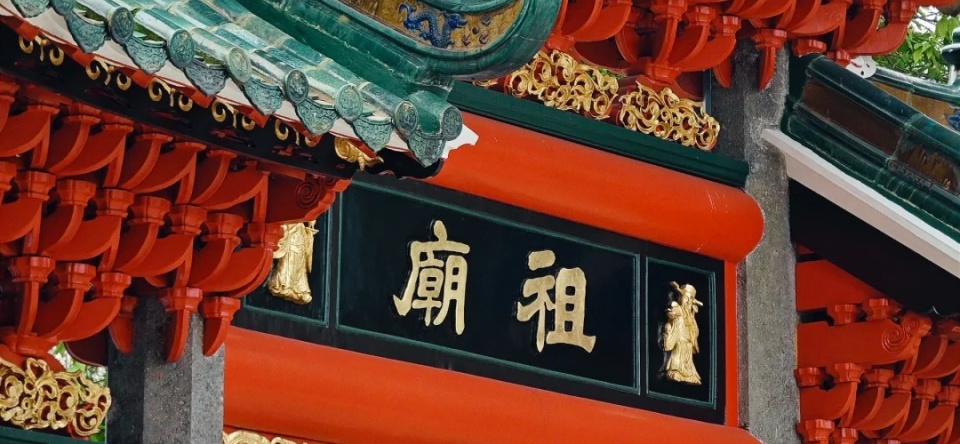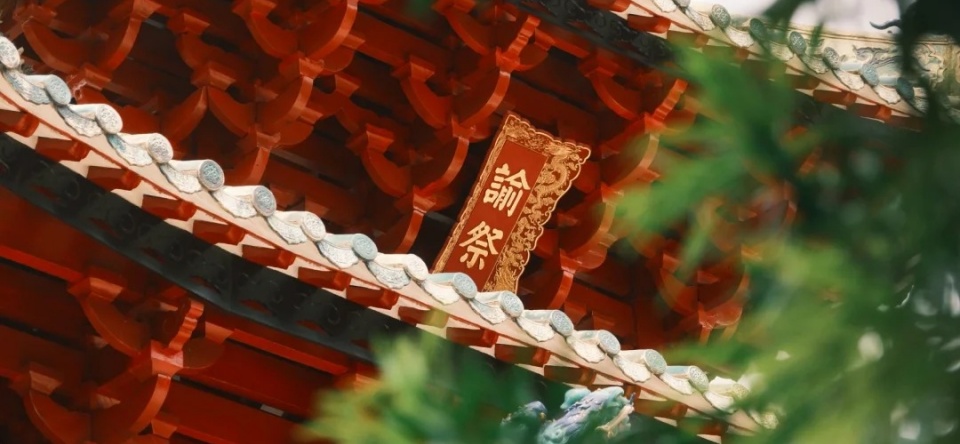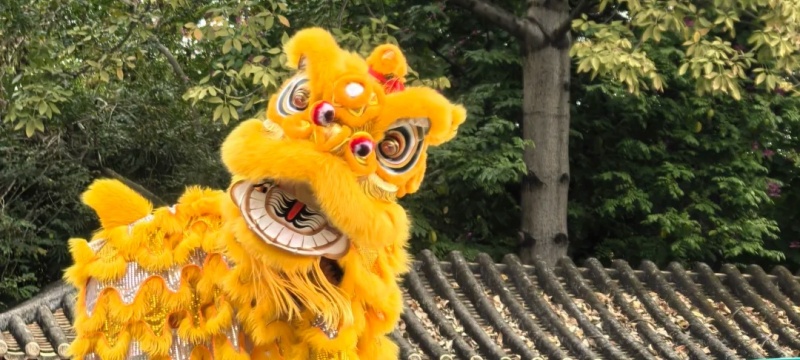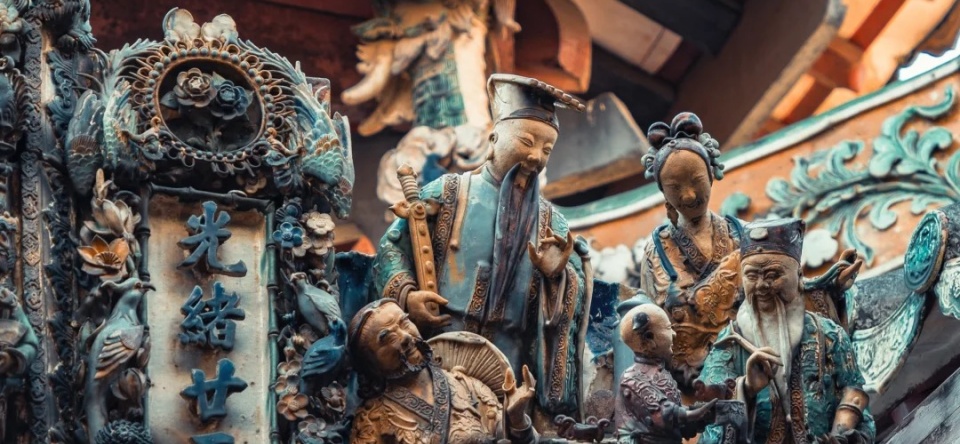







Ancestral Temple
Known for its "three carvings, two sculptures, one casting, and one painting", the exquisite wood carving, brick carving, and stone carving techniques showcase the profound cultural heritage of Lingnan. As a national first-class museum and a key cultural relic protection unit, the Chen Family Temple is not only a treasure trove for studying Lingnan culture, but also a must visit place for tourists to experience the charm of Guangfu culture
Scenic spot introduction:
Foshan Ancestral Temple, also known as "Beidi Temple" and "Lingying Temple", is located at No. 21, Zumiao Road, Chancheng District, Foshan City, Guangdong Province. It was first built in the Yuanfeng period of the Northern Song Dynasty (1078~1085). After more than 20 times of renovation and expansion, the existing buildings are mainly Wanfu Platform, Lingying memorial archway, Jinxiang Pool, Bell and Drum Tower, Three Gates, Front Hall, Main Hall, Qingzhen Tower and other Ming and Qing architectures, with typical Lingnan architectural style. Ancestral Temple is a national 4A level tourist attraction, a Chinese cultural heritage base in Guangdong Province, and one of the ten demonstration sites for civilized tourism in Guangdong. It receives over 1.5 million visitors annually. The Zumiao Scenic Area integrates the ancient architectural art of the Ming and Qing dynasties with the traditional culture of Foshan, and is known as the "Palace of Oriental Art".
Scenic History:
The ancestral temple was first built during the Yuanfeng period of the Northern Song Dynasty (1078-1085), and was destroyed by a large fire at the end of the Yuan Dynasty. It was rebuilt in the fifth year of the Hongwu reign of the Ming Dynasty (1372). After more than 20 renovations and expansions, a comprehensive renovation was carried out in the 25th year of the Guangxu reign of the Qing Dynasty (1899). According to the "Zhongyi Township Annals of Foshan", the temple has been known as the "Ancestral Hall" or "Ancestral Temple" from the Yuan Dynasty to the Ming Dynasty, and is considered the first among all temples due to its long history. Therefore, it has been regarded as the ancestor of hundreds of local ancestral temples throughout history.
Introduction to scenic spots within the scenic area:
Wanfu Terrace: Built in the 15th year of the Shunzhi reign of the early Qing Dynasty (1685), it was a stage specifically designed for acting.
Lingying memorial archway: built in 1451, the second year of Jingtai in the Ming Dynasty, the design of the archway is strict and the structure is precise.
Jinxiang Pond: A pond within the ancestral temple, with a tranquil environment.
Bell and Drum Tower: Located within the ancestral temple, it is one of the ancient buildings.
Sanmen: Built in the early years of Jingtai, it is the facade of the entire ancestral temple.
Front Hall: Built in the fourth year of the Ming Xuande era (1429), it is a gable style building.
Main Hall: Built in the fifth year of the Hongwu reign of the Ming Dynasty (1372), with the style of a gable top.
Qingzhen Building: Built in the Jiaqing year of the Qing Dynasty (1796), the building has three floors.
Confucian Temple: The Confucian temple within the ancestral temple, dedicated to Confucius.
Huang Feihong Memorial Hall: Located within the ancestral temple, it is a venue dedicated to Huang Feihong.
Ip Man Hall: Located within the ancestral temple, it is a venue commemorating Ip Man.
Stele Gallery: The stele gallery inside the ancestral temple displays a large number of inscriptions.
Exhibition Hall: The exhibition hall inside the ancestral temple showcases the history and culture of Foshan.
Garden: The garden inside the ancestral temple has an elegant environment.
Tourist attraction route:
It is suggested that tourists enter from the main entrance and visit Wanfu Platform, Lingying memorial archway, Jinxiang Pool, Bell and Drum Tower, Sanmen, Front Hall, Main Hall, Qingzhen Tower and other scenic spots in turn. During the visit, one can appreciate the historical architecture and cultural landscape of the ancestral temple.
Best viewing season:
Spring and autumn are the best time to visit, as the weather is suitable and the flow of people is relatively low. This allows for a better experience of the historical, cultural, and architectural features of the ancestral temple. The temperature is higher in summer, but the shade and architecture of the ancestral temple can provide a certain coolness. The temperature is lower in winter, but the architecture and cultural landscape of the ancestral temple can provide a certain warmth.
Scenic Area Transportation:
Public transportation: You can take a bus to get off at Zumiao Road Station.
Self driving: Navigate to "Foshan Ancestral Temple" and there is a nearby parking lot available for parking.
Distance from high-speed rail/city/airport: Zumiao is located in Chancheng District, Foshan City, about 25 kilometers from Guangzhou South Station and 45 kilometers from Baiyun International Airport. It can be reached by bus or taxi.
Scenic spot tickets and paid items:
Ticket price: The entrance fee for the ancestral temple is 20 yuan per person (the specific price is subject to the announcement of the scenic area).
Paid items: Some shops and experiential projects require self payment.
Special precautions for scenic spots:
Opening hours: The ancestral temple is open all day, but some shops and exhibition halls have specific opening hours.
Cultural relic protection: Tourists should pay attention to protecting cultural relics and historic sites during their travels, and not climb or damage buildings.
Environmental Maintenance: Smoking and littering are prohibited in the ancestral temple. Please keep the environment clean.
Luggage Deposit:
There is a luggage storage point near the ancestral temple, which is convenient for tourists to store their luggage.
